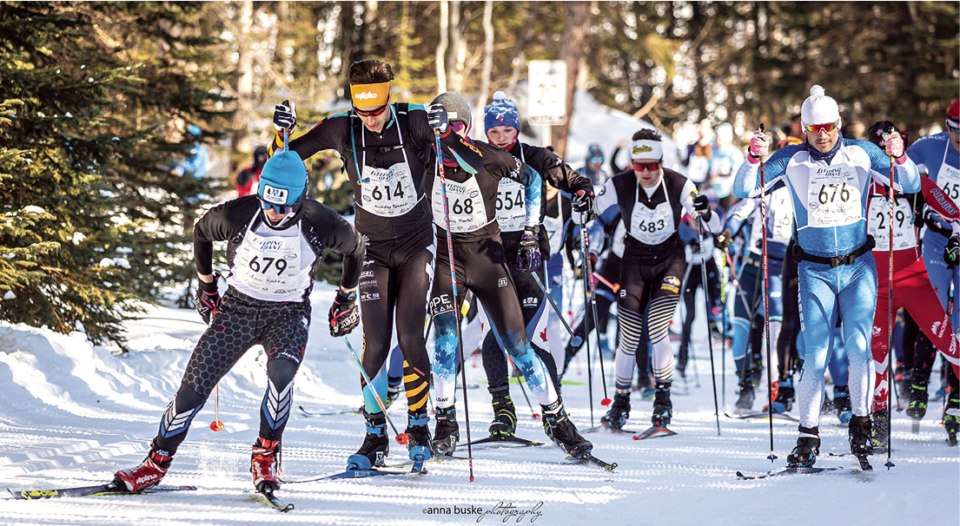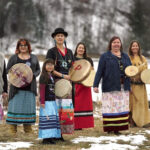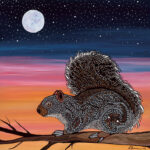Sleeping Giant Provincial Park is a rugged place. Huge cliffs overlooking Lake Superior form the rocky shape of Nanabijou—the Ojibwe spirit of deep water lying in slumber on the Sibley Peninsula, where the park unfolds.
But for many residents and visitors to Thunder Bay, one particular event each year—the Sleeping Giant Loppet cross-country ski festival—turns the legendary giant figure into a real-life fulfiller of skiing dreams. This competitive and recreational event, which can be done in 50, 35, 20, and 8 km distances, takes place annually the first Saturday in March—since 1978.
It’s the event’s remote location, enormous forested course, and exceedingly strong race organization that makes the Sleeping Giant Loppet a premier Canadian ski tradition. Sadly, this year’s event is a no-go due to the lack of snow.
Far Out
How many ski festivals can brag of taking place in a Provincial Park? Not many.
Sleeping Giant Loppet event coordinator Peter Gallagher sees the event’s location as one of its main attractions: “People in Thunder Bay, in particular, view the park as a magical place. They go there for summertime camping, or for starting kayaking trips on Lake Superior. It’s also a ski destination in winter. The tradition of going to the park for this event since 1978 is a big attraction.”
Sleeping Giant Provincial Park has a very remote feel. It takes an hour’s drive east from Thunder Bay to get to the basically unpopulated Sibley Peninsula. Once in the 61,157-acre park, established in 1944, skiers can complete a circle around sprawling Marie Louise Lake (the 20 km course), or propel themselves up into the park’s highlands (the 35 and 50 km courses). The 50 km course has sections remote enough that Gallagher refers to them as “the bush.”

Yet race volunteers are there for support, attending to skiers at checkpoints along all courses. Participants can get water and nutrition at these aid stations, as well as benefit mentally from the cheerful show of support from the hundreds of volunteers.
A Cultural Experience
It feels like the whole city comes out to support the skiers on race day. Thousands of people line up around the finish line to support the 900 or so racers in an average year, with about 300 of those doing the 8 km race.
Gallagher notes the transition to inclusivity over time: “The 8-kilometer event is the largest today in terms of participation. Originally the Loppet was a 50 kilometer event for hardcore skiers. Gradually, as we’ve been able to add more distances, more people have had a chance to be involved.”
Gallagher has put in 44 years of volunteer service organizing the Sleeping Giant Loppet. He joined race coordination in 1980, two years after the inaugural Sleeping Giant Loppet was conducted by the student-run outdoor recreation club at Lakehead University.
Today, Gallagher is proud of the variety of race experiences the Loppet provides. “We can serve the elite athletes who are there to vie for the championship, but also the grandparents who are there with their grandchildren, introducing them to the sport,” explains Gallagher.
The cultural aspect of the race was a draw last March for June Lee, born and raised in Seoul, South Korea. Lee now resides in Duluth, where she took up cross-country skiing for the first time two years ago. Lee registered for the 20 km Loppet in classic technique in 2023: “Twenty kilometers was the most I’ve ever skied at one time. I started out with a little fear, but all the people were super chill and friendly. The volunteers were cheering me on with bells.”
Lee was also blown away by the course’s scenery. “It was a bright sunny day, and as I was skiing around Mary Louise Lake, with Lake Superior close by, I had to step out of the immaculate track at one point and take a few photos. I had to capture the moment—where else will I ever ski in those kinds of surroundings?”
2024 is a Snow No-Go
The 2024 edition of the Sleeping Giant Loppet, like other cross-country ski events across the Midwest this season, had to be called due to a lack of snow.
Maybe this cancellation balances out the incredible luck racers had to squeeze in the March 2020 edition of the Loppet. “We were unbelievably fortunate to run that race one week before the whole world shut down,” reminisces Gallagher, who’s seen it all in his 44-year volunteer tenure.

For those already dreaming of future Sleeping Giant Loppet renditions, it’s worth noting some of the event’s other special features.
One is the 50 km “skiathlon,” where racers compete for the first half of the race using classic technique, and then switch to skate technique on a different pair of skis for the second half.
Gallagher explains: “The skiathlon racers start with the other classic 50-kilometer events. We transport their skate skis to checkpoint three, which is 22 kilometers away, and they switch over at that time. I know a local skier who didn’t think she could do 50 kilometers in one technique, but by combining two techniques, she did the whole 50-kilometer course. After she did it the first time, she said it was her most fun ever at a cross-country event.”
Another special feature are the classic and skate courses groomed side-by-side. The whole 50 km course has both a classic track and skate lane, as does the 20 km course. This makes couples skiing very enjoyable when using two different techniques. It also makes it easier to talk with other skiers. A majority of the skiers in the 20 km race are recreational skiers who support each other on the course.
Finally, all participants get a sweet reward for their sweat and toil. June Lee recounts her experience: “The energy at the finish line felt amazing. The volunteers ran over to me after I completed the race and gave me a chocolate medal. I thought that was super creative.”
Giant Volunteer Hearts
The Sleeping Giant Loppet’s most special features is its hundreds of volunteers. Everything is done by volunteers, all the way to the excellent volunteer event photographers.
Gallagher recounts the dedication needed to conduct the race. “On the 50-kilometer course, there’s one checkpoint 10 kilometers inland, and so the volunteers use snow machines pulling sleds to haul in the gear and supplies the day before. Those are the kind of logistics we work on.”
The Sleeping Giant Loppet is not your average cross-country ski festival. The striking scenery, the exquisite course in a Provincial Park, and the giant volunteer hearts all make this race a unique tradition—when the snow decides to cooperate. To learn more about the Sleeping Giant Loppet, visit: sleepinggiantloppet.ca.




